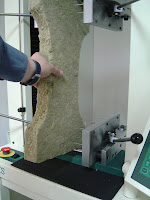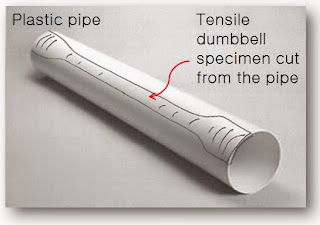S0985 - Tinius Olsen - Insulation Grip
 Imagine trying to hold a piece of fibre insulation (the stuff in your roof that stops the heat escaping) in a clamp and then pulling it apart using a tensile test, how on earth do you do it? It’s fibrous, comes in different thicknesses, breaks of easily into chunks…
Imagine trying to hold a piece of fibre insulation (the stuff in your roof that stops the heat escaping) in a clamp and then pulling it apart using a tensile test, how on earth do you do it? It’s fibrous, comes in different thicknesses, breaks of easily into chunks…Well the answer is Nails, and lots of them.
This is the most effective way to distribute the load across and through this particular sample, this means that the test specimen isn’t overly damaged when you grip it. If the sample is ‘waisted’ properly (like an hour glass), it will break in the weakest spot, not by the grip. This is a technique used time and again with all kinds of samples. You want to see how the material will break under load, not how the grip breaks it, and then the load pull it apart.
As there are a lot of nails it’s quite hard to push them through the top surface of the specimen (Imagine trying to nail 20 nails at once into something soft. It might be soft but there is a lot of friction to overcome).
To overcome this friction the plates that hold the nails have levers on the back, and run on rods of polished stainless steel. This keeps them parallel and gives the Insulation Grip a good structure. The operator can easily get hold of the sample but pulling the long lever.
Just watch your fingers! Nails are sharp!
One of the applicable standards is EN1608, there are several insulation tensile grips Tinius Olsen has done in the past these include the S0655, S0798, S0810 and S0811.



Comments